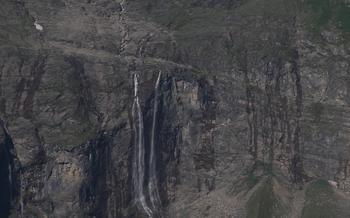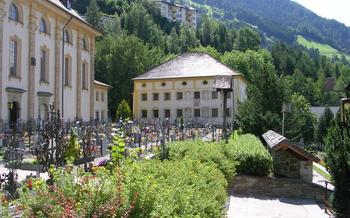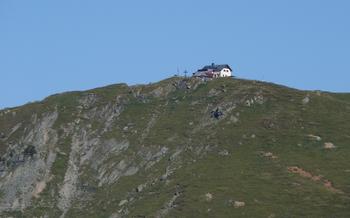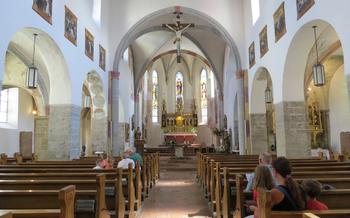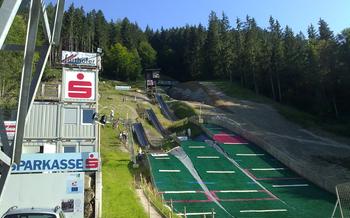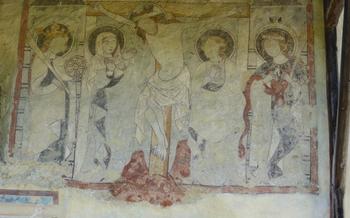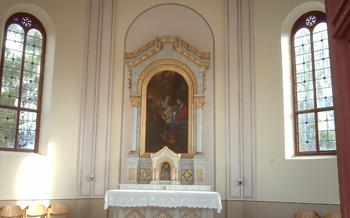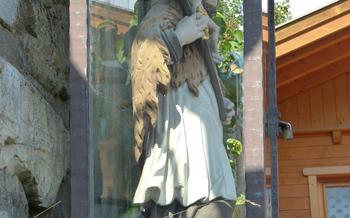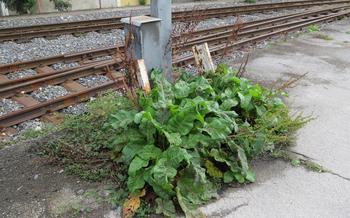
Pinzgau Walk
- Zell am See and the Pinzgau Region:
- Pinzgau Walk: Overview
- Starting Point
- Trail Markings:
- Walking Conditions and Terrain
- Highlights of the Trail:
- Length and Duration
- Difficulty Level
- Rest Stops and Refreshments
- Accommodation Options
- Guided Tours
- Safety Precautions
- Best Time to Visit
- Packing List: Essential Gear for the Pinzgau Walk
- Insider Tip: Unveiling a Hidden Gem
Zell am See and the Pinzgau Region:
Zell am See, a picturesque town nestled in the heart of the Pinzgau region in Austria, boasts a rich history dating back centuries. Originally a Celtic settlement, it later became a Roman outpost and a bustling trading center in the Middle Ages. The town's strategic location at the crossroads of important trade routes contributed to its growth and prosperity. Zell am See's charm lies in its idyllic setting, surrounded by breathtaking mountains, lush forests, and the pristine waters of Lake Zell. This natural beauty attracts outdoor enthusiasts from around the world, making it a popular destination for hiking, biking, skiing, and more. The majestic peaks of the Hohe Tauern National Park, including the Großglockner, Austria's highest mountain, provide a stunning backdrop to the town. With its rich cultural heritage, stunning landscapes, and endless opportunities for adventure, Zell am See offers an unforgettable experience for travelers seeking tranquility and outdoor exhilaration.
Pinzgau Walk: Overview
The Pinzgau Walk is a picturesque hiking trail that traverses the stunning Pinzgau region, showcasing its breathtaking natural beauty and rich cultural heritage. Spanning a total distance of approximately 35 kilometers, the trail offers a diverse range of landscapes, from serene lake views to majestic mountain vistas. The route is designed for hikers of all experience levels, with options for shorter day hikes or longer multi-day adventures.
Along the Pinzgau Walk, hikers are treated to a kaleidoscope of scenic highlights. The trail meanders along the crystal-clear waters of Lake Zell, offering panoramic views of the lake's shimmering surface and the towering peaks that encircle it. As the trail progresses, hikers encounter charming villages steeped in tradition, where they can glimpse into the region's rich history and heritage. The route also passes by historical landmarks, such as medieval castles and ancient churches, providing a glimpse into the region's past.
The Pinzgau Walk is a well-marked trail, ensuring that hikers can navigate the route with ease. Yellow signs with black lettering guide the way, indicating the direction and distance to the next destination. Along the trail, additional signs provide informative insights into the region's natural and cultural highlights, enhancing the hiking experience.
Starting Point
The Pinzgau Walk begins in the heart of Zell am See, the main town of the Pinzgau region. To reach the starting point, hikers can make their way to the town square, known as Stadtplatz, where they will find a signpost indicating the start of the trail. Zell am See is conveniently connected by road, rail, and bus, making it easily accessible from various destinations. For those arriving by car, there are several parking options available in the town, including public parking lots and designated parking areas near the trailhead.
Trail Markings:
The Pinzgau Walk is well-marked, making it easy for hikers to navigate the trail. Yellow signs with black lettering are placed along the route, providing clear directions and information. It is essential to follow these markings carefully to stay on track and avoid getting lost. Additionally, there are signs along the trail that provide information about the surrounding area, historical landmarks, and points of interest. These signs enhance the hiking experience by adding an educational component to the journey.
Walking Conditions and Terrain
The Pinzgau Walk offers a diverse range of walking conditions, ensuring a captivating experience for hikers of all levels. The trail combines paved paths, gravel roads, and forest trails, providing a mix of easy and challenging terrain. While the majority of the route is well-maintained and accessible, some sections may present uneven surfaces and steep inclines. It is crucial to wear appropriate footwear, such as hiking boots or sturdy shoes, to ensure stability and comfort throughout the hike. Additionally, trekking poles can be beneficial for providing extra support on uneven terrain and reducing the strain on your knees and joints.
Highlights of the Trail:
The Pinzgau Walk offers a diverse range of highlights that captivate hikers throughout their journey. One of the most mesmerizing aspects of the trail is the stunning views it presents of Lake Zell and the majestic mountains that embrace it. As hikers traverse the path, they are treated to panoramic vistas of the shimmering lake, reflecting the vibrant hues of the sky and the verdant slopes of the surrounding peaks.
Along the way, the trail winds through charming villages, each exuding its unique character and showcasing traditional Austrian architecture. Hikers can immerse themselves in the local culture by visiting historic churches, sampling regional delicacies at cozy cafes, and interacting with the friendly locals.
The trail also takes hikers past traditional farms, offering a glimpse into the agricultural heritage of the region. These farmsteads, with their rustic charm and idyllic settings, provide a tranquil contrast to the more rugged mountain landscapes.
Moreover, the Pinzgau Walk passes by several historical landmarks and cultural heritage sites that narrate the rich history of the region. Hikers can explore ancient castle ruins, visit museums dedicated to local traditions, and discover hidden gems that reveal the captivating stories of the past.
Length and Duration
The Pinzgau Walk offers a flexible hiking experience with varying lengths and durations to cater to different preferences and abilities. The total distance of the trail is approximately 38 kilometers, and the average duration to complete the entire walk is around three to four days. However, hikers have the option to customize their journey by breaking it down into manageable stages or completing it as a day hike.
For those seeking a leisurely and immersive experience, spreading the hike over several days allows ample time to soak in the scenery, explore the villages along the way, and fully appreciate the region's charm. This approach provides opportunities for rest, cultural exploration, and deeper engagement with the local communities.
Hikers with limited time or those seeking a more challenging adventure can opt to tackle the entire trail in a single day. While this option requires a good level of fitness and endurance, it offers the satisfaction of completing the entire route in one go and experiencing the diverse landscapes within a shorter timeframe.
When planning the hike, it's essential to consider one's pace, fitness level, and the desired experience. Whether choosing a multi-day adventure or a day hike, the Pinzgau Walk provides a flexible and rewarding experience for hikers of all levels.
Difficulty Level
The Pinzgau Walk is generally considered a moderate-difficulty hike. It is suitable for hikers of varying experience levels, from beginners to experienced trekkers. The trail's difficulty lies primarily in its length and the presence of some steep ascents and descents. Hikers should be prepared for a challenging but rewarding experience.
Those new to hiking may find some sections of the trail to be demanding, particularly if they are not accustomed to long-distance treks. However, with proper preparation and pacing, even beginners can complete the walk successfully.
Experienced hikers will likely find the Pinzgau Walk to be a moderate challenge. The trail's length and elevation changes provide a good workout, but the well-maintained paths and clear markings make it manageable for those with a good level of fitness.
It is important to note that the trail conditions can change depending on the weather. During wet weather, some sections may become slippery or muddy, requiring extra caution. Hikers should always check the weather forecast before embarking on the walk and be prepared for changing conditions.
Rest Stops and Refreshments
Along the Pinzgau Walk, hikers will find several opportunities to rest and replenish their energy. Quaint villages dot the trail, offering a variety of restaurants, cafes, and snack bars where hikers can indulge in local delicacies and refreshments. From hearty Tyrolean cuisine to refreshing beverages, there's something to satisfy every taste bud.
In addition, there are designated picnic areas and benches scattered along the trail, inviting hikers to take a break and enjoy a packed lunch surrounded by stunning scenery. These spots provide a chance to soak in the tranquility of nature while refueling for the journey ahead.
It's important to note that while there are food and beverage options available, it's always advisable to carry sufficient water and snacks for the hike. This ensures that hikers stay hydrated and energized throughout their adventure.
Accommodation Options
Zell am See offers a range of accommodation options to suit different preferences and budgets. From cozy guesthouses to luxurious hotels, there's something for every traveler. For those seeking a more immersive experience, traditional farmhouses and charming bed and breakfasts provide a glimpse into the local way of life.
To ensure a comfortable stay, advance booking is highly recommended, especially during the peak tourist season from June to September. This will guarantee your preferred choice of accommodation and avoid any last-minute surprises.
For budget-conscious travelers, hostels and guesthouses offer affordable options with shared rooms and basic amenities. Mid-range hotels provide a comfortable stay with modern facilities and convenient locations. For those seeking indulgence, luxury hotels offer upscale amenities, stunning views, and personalized services.
To find the best deals and discounts, consider booking your accommodation well in advance or taking advantage of off-season rates. Online platforms and travel agents often offer exclusive deals and packages that can save you money.
Guided Tours
For a more in-depth and immersive experience, consider joining a guided tour of the Pinzgau Walk. Led by knowledgeable local guides, these tours offer insights into the region's history, culture, and natural wonders. Benefit from their expertise as they share stories and anecdotes about the landmarks you pass along the way.
Guided tours provide a sense of security, especially for first-time hikers or those unfamiliar with the area. The guides are well-versed in the trail conditions and can offer advice on the best routes and rest stops. They also carry emergency supplies and communication devices, ensuring your safety throughout the hike.
Whether you choose a group tour or a private guided experience, you'll have the opportunity to learn about the Pinzgau region's rich heritage and connect with fellow hikers who share your passion for the outdoors. Booking a guided tour in advance is recommended, especially during peak season, to secure your spot and avoid disappointment.
Safety Precautions
Venturing into the great outdoors on the Pinzgau Walk requires a keen awareness of safety measures. Prioritizing your well-being ensures a smooth and enjoyable hiking experience.
First and foremost, dress appropriately for the conditions. Wear sturdy hiking boots with good ankle support to navigate uneven terrain safely. Layer your clothing to adapt to changing temperatures throughout the day. Pack a waterproof jacket in case of rain.
Carry a map, compass, and flashlight for emergencies. These tools will help you stay on track and find your way back if you lose the marked trail. Be aware of potential hazards such as wildlife encounters, sudden weather changes, and slippery surfaces.
Stay hydrated by carrying sufficient water, especially on hot days. Pack energy-rich snacks to replenish your energy levels during the hike. It's always better to be prepared than caught off guard.
Finally, respect the environment and leave no trace. Dispose of waste responsibly and avoid disturbing the natural habitat. By following these safety guidelines, you can fully embrace the beauty of the Pinzgau Walk while ensuring your well-being.
Best Time to Visit
The timing of your Pinzgau Walk adventure can significantly impact your experience. While the trail is accessible year-round, certain seasons offer distinct advantages. For optimal weather conditions, consider embarking on your hike during the spring (May-June) or autumn (September-October). During these shoulder seasons, you'll be greeted by pleasant temperatures, fewer crowds, and vibrant foliage displays.
If you prefer warmer weather, the summer months (July-August) provide longer daylight hours and a higher chance of sunshine. However, be prepared for potentially higher temperatures and increased tourist traffic. For a more peaceful experience, consider avoiding the peak tourist season, which typically falls between mid-July and mid-August.
To enhance your journey further, plan your hike around local festivals and events. Zell am See and the Pinzgau region host various cultural celebrations throughout the year, offering a unique opportunity to immerse yourself in the local traditions and festivities. Check the region's tourism website for event listings and plan your hike accordingly.
Packing List: Essential Gear for the Pinzgau Walk
Embarking on the Pinzgau Walk requires careful preparation to ensure a comfortable and safe hiking experience. Here's a comprehensive list of essential items to pack for your journey:
-
Hiking Boots: Sturdy and well-fitted hiking boots with good ankle support are paramount for tackling the varied terrain along the trail.
-
Layers of Clothing: Pack layers of clothing to adapt to changing weather conditions. Include a moisture-wicking base layer, an insulating mid-layer, and a waterproof outer layer.
-
Backpack: Choose a comfortable backpack with enough space to carry all your essentials, including food, water, and extra layers of clothing.
-
Sun Protection: Pack a hat, sunglasses, and sunscreen to protect yourself from the sun's harmful rays.
-
Hydration: Bring a reusable water bottle and fill it up regularly at designated water fountains or streams along the trail.
-
First Aid Kit: Carry a basic first aid kit containing essential items for treating minor injuries or ailments.
-
Navigation Tools: Bring a map, compass, and altimeter to help you stay on track and navigate the trail confidently.
-
Flashlight or Headlamp: Pack a flashlight or headlamp for emergencies or if you decide to hike in the early morning or evening hours.
-
Energy Bars or Snacks: Pack energy bars, trail mix, or other snacks to refuel during the hike.
-
Camera: Capture the stunning scenery and memorable moments along the trail with a camera.
-
Whistle: Carry a whistle for signaling in case of an emergency.
-
Cash or Credit Card: Bring some cash or a credit card for purchases at cafes or restaurants along the way.
Remember to pack light, bringing only the essentials to avoid unnecessary weight. Double-check your packing list before setting off on your adventure to ensure you have everything you need for a successful and enjoyable hike on the Pinzgau Walk.
Insider Tip: Unveiling a Hidden Gem
As you embark on the Pinzgau Walk, let me share a local's secret with you. Nestled amidst the towering peaks, there lies a hidden viewpoint that offers a breathtaking panorama of the region. To find this secluded spot, venture off the main trail and follow a narrow path that leads uphill. The ascent is worth the effort, as you'll be rewarded with unparalleled views of Lake Zell, the surrounding mountains, and the picturesque village below. Take a moment to soak in the tranquility and capture the beauty of this unspoiled gem. Remember to tread lightly and leave no trace, preserving this hidden treasure for future generations to discover.
